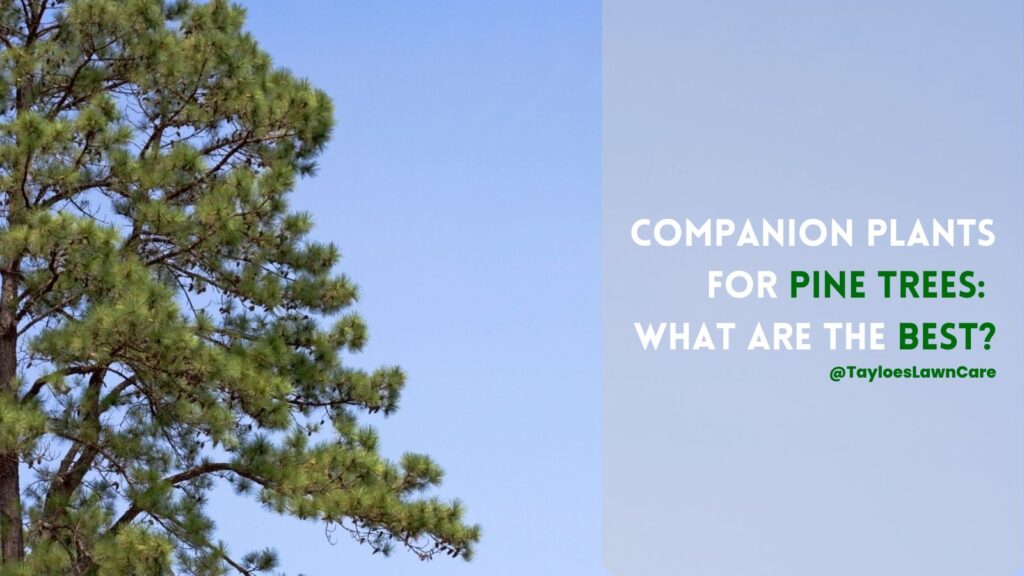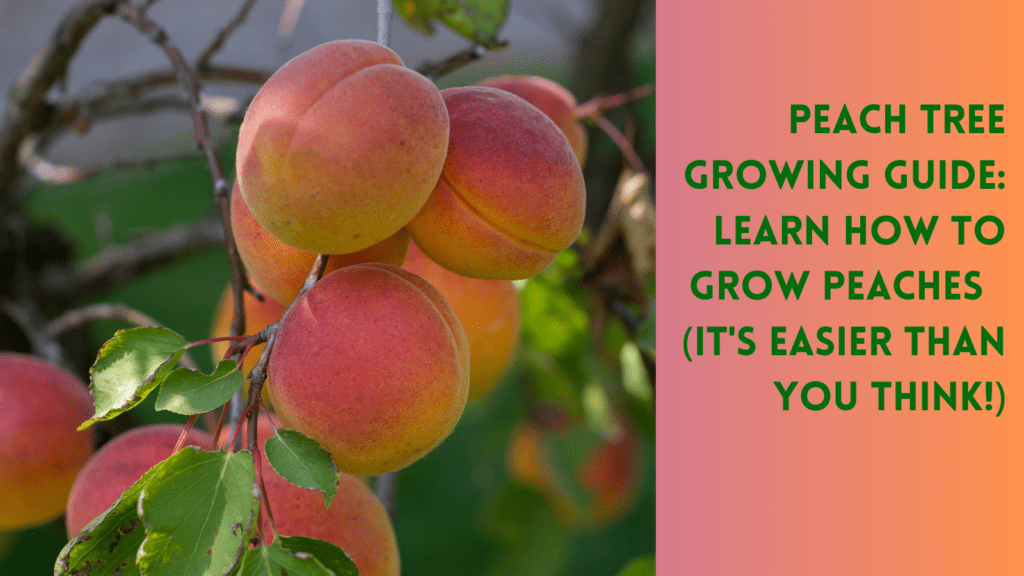Last Updated on: 20th October 2023, 04:31 pm
These beauties thrive with minimal care.
Trees are an essential landscape element that can give your yard a beautiful look and refreshing summertime shade. So what better way to enjoy them than by planting North American native species trees?
For our clients and neighbors in Eastern North Carolina, particularly those in USDA zones 7b and 8a, selecting trees that naturally thrive in the local climate enhances the aesthetic appeal of your landscape. Moreover, they require little care from you – let nature take over! Native trees also support local pollinator and wildleife health.
Read on for a list of ten native species trees perfect for our area.
10 North American Native Species Trees That Thrive in Northeastern North Carolina
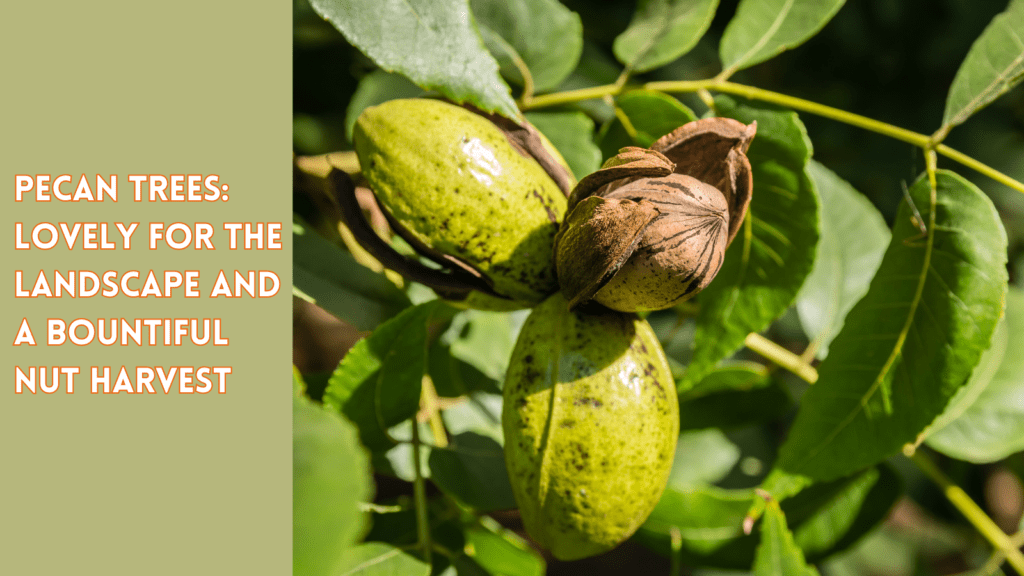
1. Live Oak (Quercus virginiana)
The Live Oak, with its majestic and sprawling branches, stands as a timeless sentinel across the landscapes of Eastern North Carolina. This is a nearly evergreen tree, only losing its leaves a few weeks in early spring. It features a robust structure and a wide arching canopy.
This North American native species gives off ample shade with a classic Southern aesthetic. It is a symbol of strength and endurance, and the Live Oak also plays a pivotal role in the local ecosystem. It is a safe habitat for various wildlife, including birds and squirrels. Its acorns serve as a crucial food source, while its sturdy branches offer refuge for nesting.
With an impressive tolerance to salt spray and adaptability to various soil types, the Live Oak is an exemplary choice for coastal and semi-coastal properties, with its almost year-round lush, green presence throughout the year.
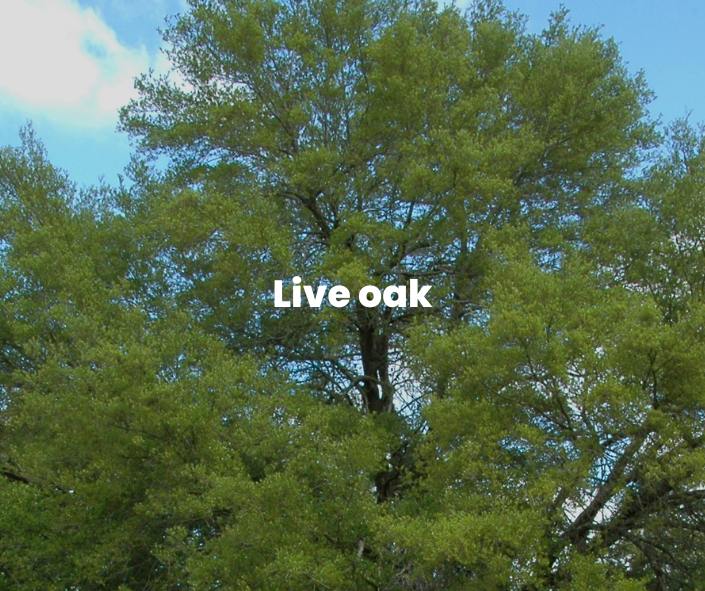
2. Red Maple (Acer rubrum)
The Red Maple might be most famous for its breathtaking autumnal display. It celebrates every fall with vibrant colors, leaves transforming into brilliant shades of red, orange, and yellow. This deciduous tree is a feast for the eyes and an essential component of the local ecosystem. Its ability to thrive in many soil conditions—from dry ridges to wetter areas—makes it a versatile choice for landscaping in Eastern North Carolina.
The Red Maple’s early spring flowers provide vital nectar for bees, while its seeds are a food source for various birds and small mammals.
Moreover, its dense foliage offers shelter to numerous wildlife, creating a lively and dynamic habitat right in your backyard. With its moderate growth rate and beautiful seasonal changes, the Red Maple is a beautiful, classic addition to choose for your landscaping needs.
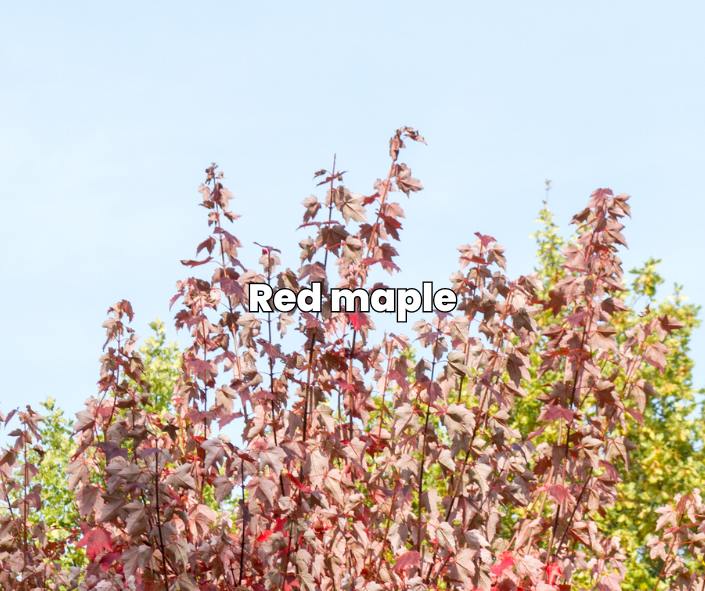
3. Eastern Redbud (Cercis canadensis)
The Eastern Redbud is a small yet remarkably vibrant tree. This North American native tree marks the arrival of spring with profuse pink to magenta blossoms elegantly adorning its branches. Before the emergence of its heart-shaped leaves, the blossoms burst open directly from the bark, creating a stunning floral display that breathes life into the awakening landscape.
Not only is this blossoming a visual delight, but the Eastern Redbud also plays a significant role in supporting pollinators. It offers a rich nectar source for bees and butterflies during the early flowering season. Its seed pods, which develop in the late spring and persist into winter, provide sustenance for various bird species and small mammals.
With its modest size and splendid springtime display, the Eastern Redbud is a perfect choice for smaller yards. It will give you a spectacular focal point.
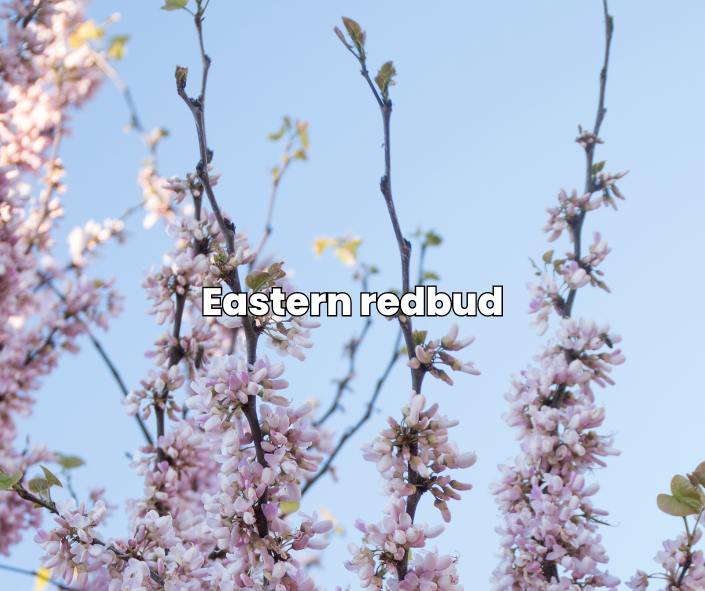
4. Sweetbay Magnolia (Magnolia virginiana)
The Sweetbay Magnolia has a graceful stature and enchanting white blossoms. Many consider it a true jewel of the Eastern North Carolina landscapes.
Most identify this semi-evergreen tree because of its creamy white flowers that bloom in late spring. The blossoms fill the air with a light, lemony scent that captivates the senses. The leaves of the Sweetbay Magnolia are a visual treat in themselves, presenting a dark green top with a silvery underside that shimmers in the breeze.
Besides being lovely to look at, the Sweetbay Magnolia tree provides essential habitat and food for local wildlife. The seeds housed within its striking, cone-like fruit serve as a food source for birds and small mammals, while its dense foliage offers shelter and nesting sites.
Thriving particularly well in moist to wet soils, it is an excellent choice for areas near ponds or in low-lying, damp areas of your landscape.
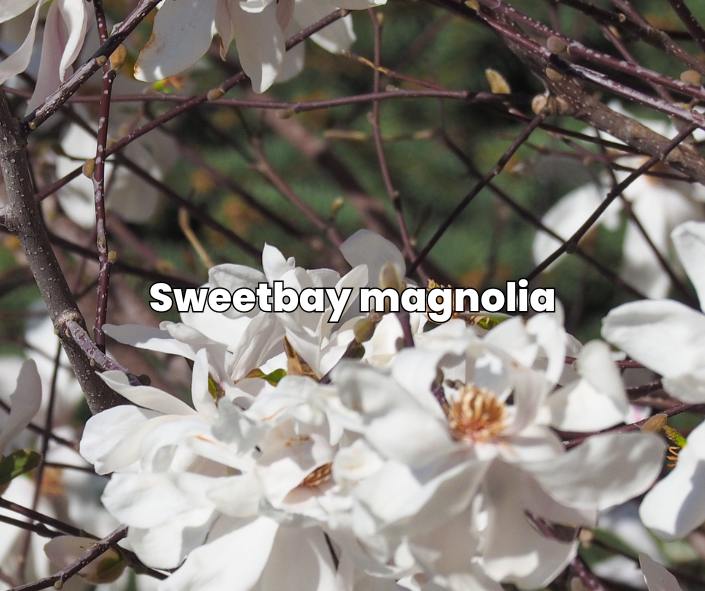
5. Flowering Dogwood (Cornus florida)
The Flowering Dogwood is a symbol of Southern charm and elegance. This North American native tree enchants every observer with its spectacular display of delicate white blossoms in the spring. Often associated with grace and beauty, this small, deciduous tree contrasts the emerging green of the springtime landscape.
But the allure of the Flowering Dogwood doesn’t end with its blossoms. In the fall, it transforms, offering vibrant red berries and foliage of purplish-red hues, providing a second act of visual splendor.
Beyond its beauty, the Flowering Dogwood plays a crucial role in the ecosystem, offering its berries as a vital food source for various bird species during the colder months. Its dense branching also provides shelter and nesting sites for wildlife, ensuring your landscape is visually stunning and teeming with life and activity throughout the seasons.

6. River Birch (Betula nigra)
The River Birch is a low-care tree. Most know it for its distinctive, cinnamon-peeling bark and lush, cascading branches. This North American native species offers any landscape aesthetic appeal and ecological value.
Particularly well-suited for areas with wet conditions, this tree is not only a solution for landscapes with poor drainage but also a beacon of beauty in such settings. The River Birch’s leaves dance gently, fluttering in the breeze, providing a soothing visual and auditory experience.
In addition to its beauty, the River Birch serves as a vital component of local ecosystems, providing seeds that are a valuable food source for various birds and small mammals. Its multi-stemmed growth habit and dense foliage also offer shelter and nesting sites for wildlife, ensuring that your wetter areas are transformed into vibrant, lively habitats.
With its adaptability to various soil conditions and notable resistance to birch borer pests, the stately River Birch is a resilient and beautiful addition to your landscape.
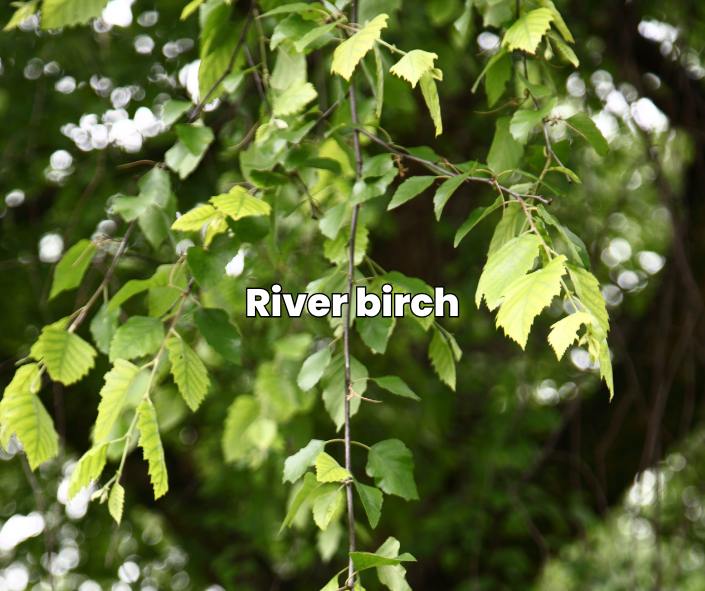
7. Southern Red Oak (Quercus falcata)
The Southern Red Oak is a tree deeply rooted in the landscapes of Eastern North Carolina. Southern gardeners love this tree’s rapid growth, adaptability, and generous canopy. With leaves that turn a rich, russet color in the fall, it provides a seasonal display that enriches the aesthetic of any landscape.
Beyond its visual appeal, the Southern Red Oak is a vital component of the local ecosystem. Its acorns, a nutritious food source, are eagerly sought after by wildlife, including deer, squirrels, and numerous bird species. The robust structure and dense foliage of the tree also provide shelter and nesting sites for wildlife, enhancing the ecological vitality of the area.
With its ability to thrive in various soil conditions without special care and its resilience against environmental stresses, the Southern Red Oak makes a reliable choice for those looking to enrich their landscapes visually and ecologically.
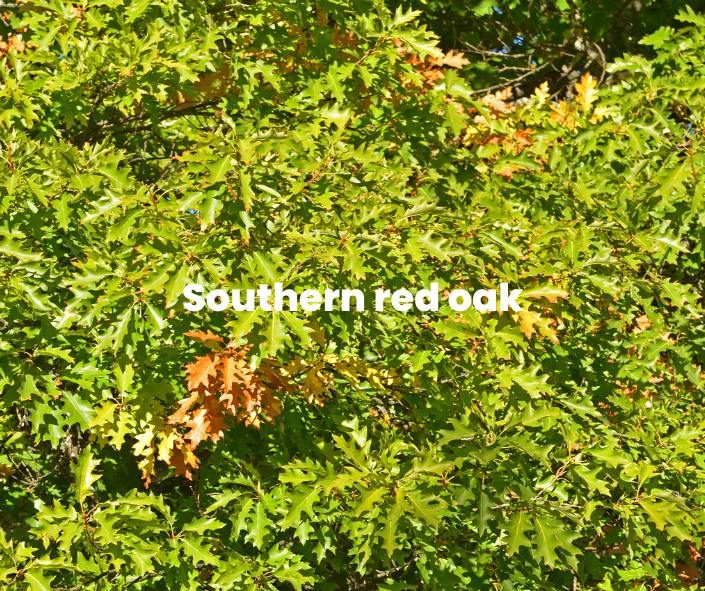
8. Atlantic White Cedar (Chamaecyparis thyoides)
The Atlantic White Cedar has a lovely, tall, slender form and feathery, evergreen foliage. This North American native tree brings beauty and ecological function to wet and swampy landscape areas.
It provides a year-round visual appeal with its delicate, scale-like leaves and columnar shape and plays a crucial role in water absorption on a wet property. The Atlantic White Cedar tree can uptake and store excess nutrients from the water, enhancing the quality of nearby water bodies and contributing to a healthier environment.
Additionally, the Atlantic White Cedar provides habitat for various wildlife species and is particularly noted for its resistance to decay, making its wood valuable for various applications. Choosing the sturdy cedar tree will elevate the aesthetic of your wetland areas and contribute positively to the local ecosystem.
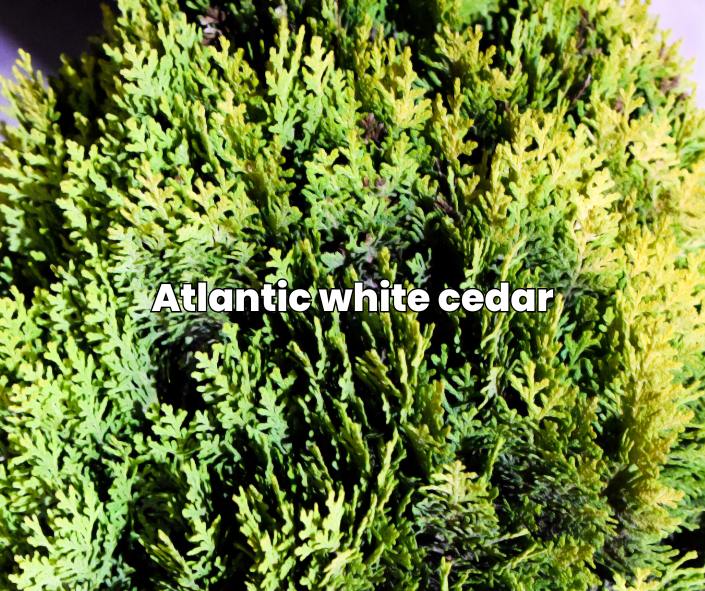
9. Black Cherry (Prunus serotina)
The Black Cherry tree, renowned for its luscious fruit and elegant, upright growth, is a delightful addition to any landscape. In the spring, the Black Cherry tree will dazzle you with a display of delicate white blossoms. These beautiful blooms add visual appeal and serve as a valuable nectar source for pollinators.
As the seasons progress, the tree produces its namesake cherries, which are a treat for humans and a vital food source for many wildlife, including birds and mammals. The leaves transform into vibrant colors in the fall, providing a seasonal display that enriches the landscape with warmth and vitality.
With its ability to attract and support a diverse range of wildlife, the Black Cherry enhances the biodiversity of your landscape, ensuring it is teeming with life and activity throughout the year.
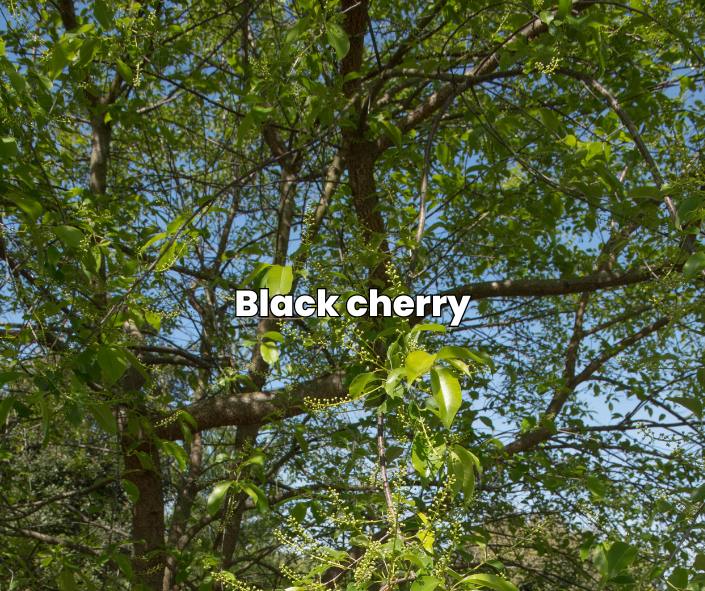
10. American Beech (Fagus grandifolia)
The American Beech has a majestic stature and timeless beauty. It graces the landscapes of Eastern North Carolina with its smooth, silver-gray bark and lush, dense foliage. Most admire its wide-spreading canopy. In fact, the American Beech tree provides a generous shade that is particularly cherished during the warm, southern summers.
In the fall, the American Beech puts on a splendid display. That’s when its leaves transform into a vibrant cascade of yellow and russet hues.
Beyond its aesthetic appeal, the tree plays a significant role in supporting local wildlife. Its triangular nuts, encased in a spiky bur, provide a valuable food source for various animals, including birds, squirrels, and deer. Furthermore, its sturdy branches and dense foliage offer shelter and nesting sites for numerous bird species.
With its year-round visual appeal and ecological contributions. This classic North American native species is a splendid addition to any landscape.
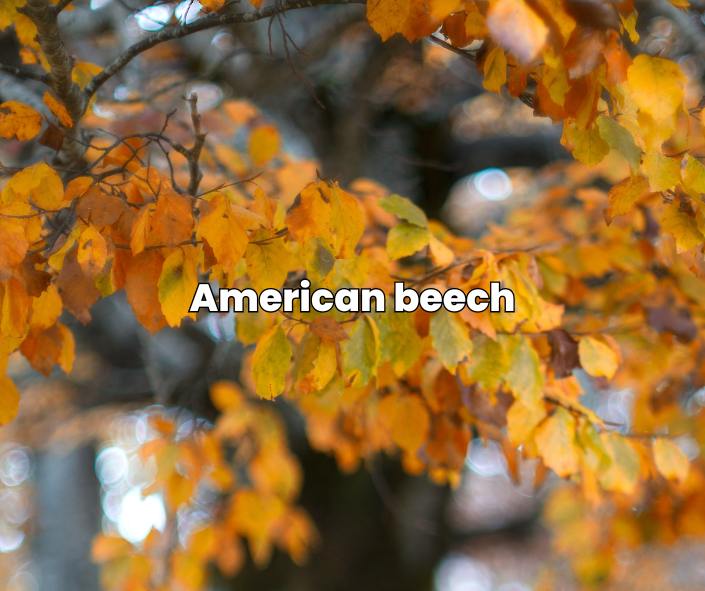
The Takeaway: Plant Native Tree Species for the Best Result…and the Least Amount of Care
Opting for native tree species is usually the best choice. Doing so ensures your landscape is visually stunning and easy to care for. Furthermore, you’ll provide habitats for pollinators and wildlife.
Tayloe’s Lawn Care Services, near Windsor, North Carolina, can provide expert advice and professional services. We can help ensure your landscape blends good looks with less maintenance. You also nourish local fauna. Reach out to us today to explore how we can assist you in selecting, planting, and nurturing native trees in your landscape. Call or text 252.287.3376 to help with lawn care or yard maintenance.
Author Profile

- Deborah Tayloe is the CEO and co-founder of Tayloe's Lawn Care Services, LLC. She has a B.S.Ed and holds certificates in soil and water management and herbology from accredited programs.
Latest entries
 Trees and ShrubsApril 22, 2025Boxwood Blight: Early identification and isolation
Trees and ShrubsApril 22, 2025Boxwood Blight: Early identification and isolation Flower GardenApril 8, 2025John F. Kennedy Rose: Hybrid tea rose with elegant white blooms
Flower GardenApril 8, 2025John F. Kennedy Rose: Hybrid tea rose with elegant white blooms Vegetable GardenMarch 24, 2025Trellis vegetables provide an abundant vertical garden harvest
Vegetable GardenMarch 24, 2025Trellis vegetables provide an abundant vertical garden harvest GardeningMarch 17, 2025Are coffee grounds good for compost?
GardeningMarch 17, 2025Are coffee grounds good for compost?





